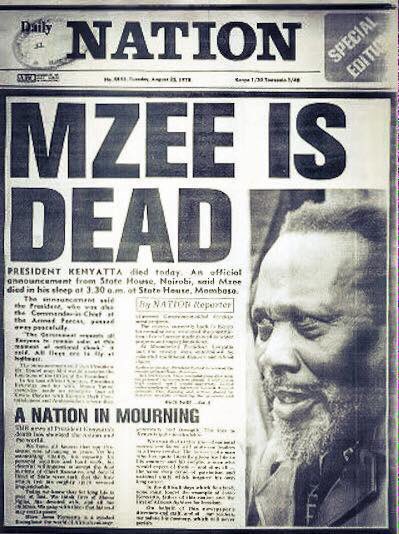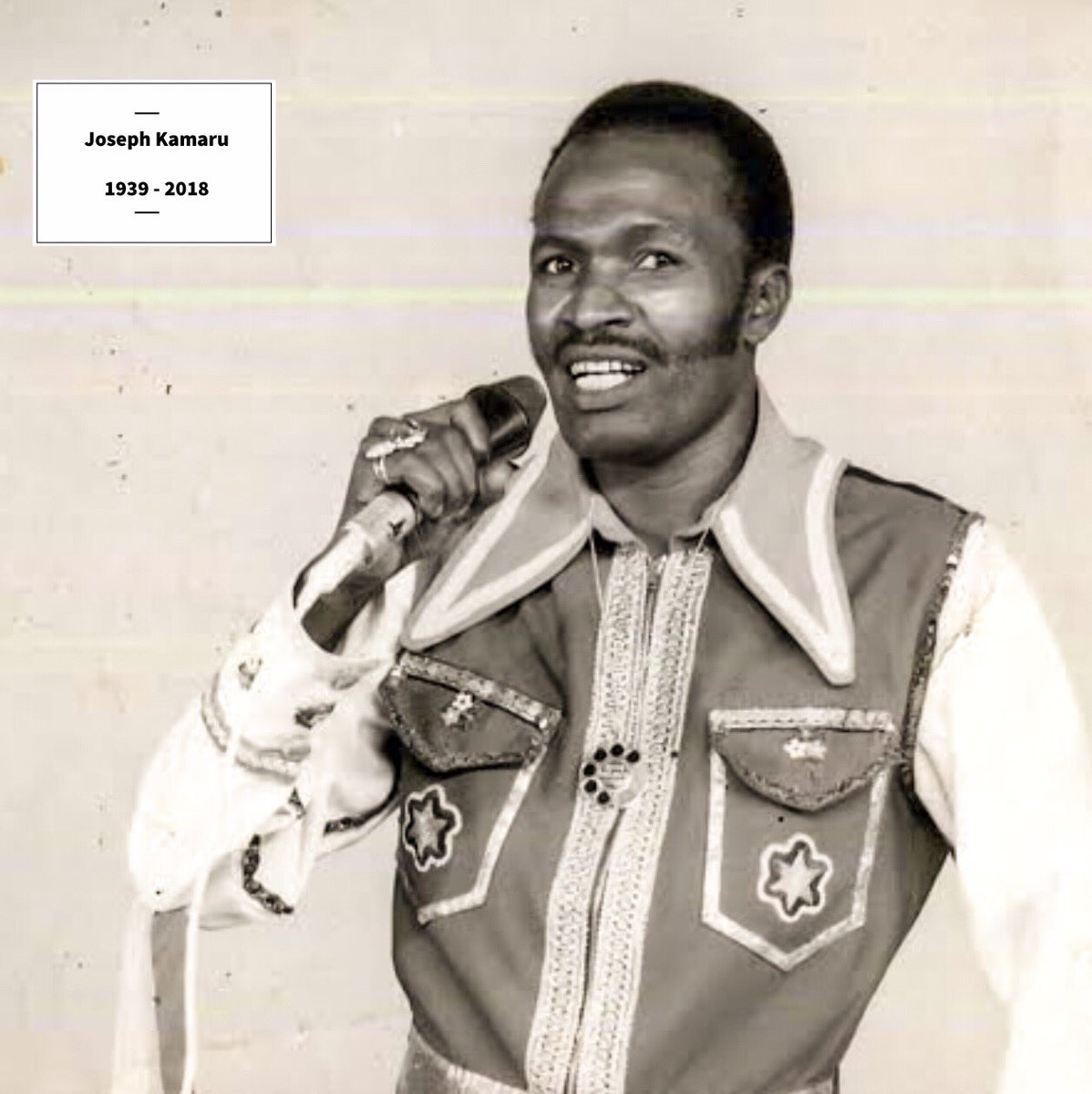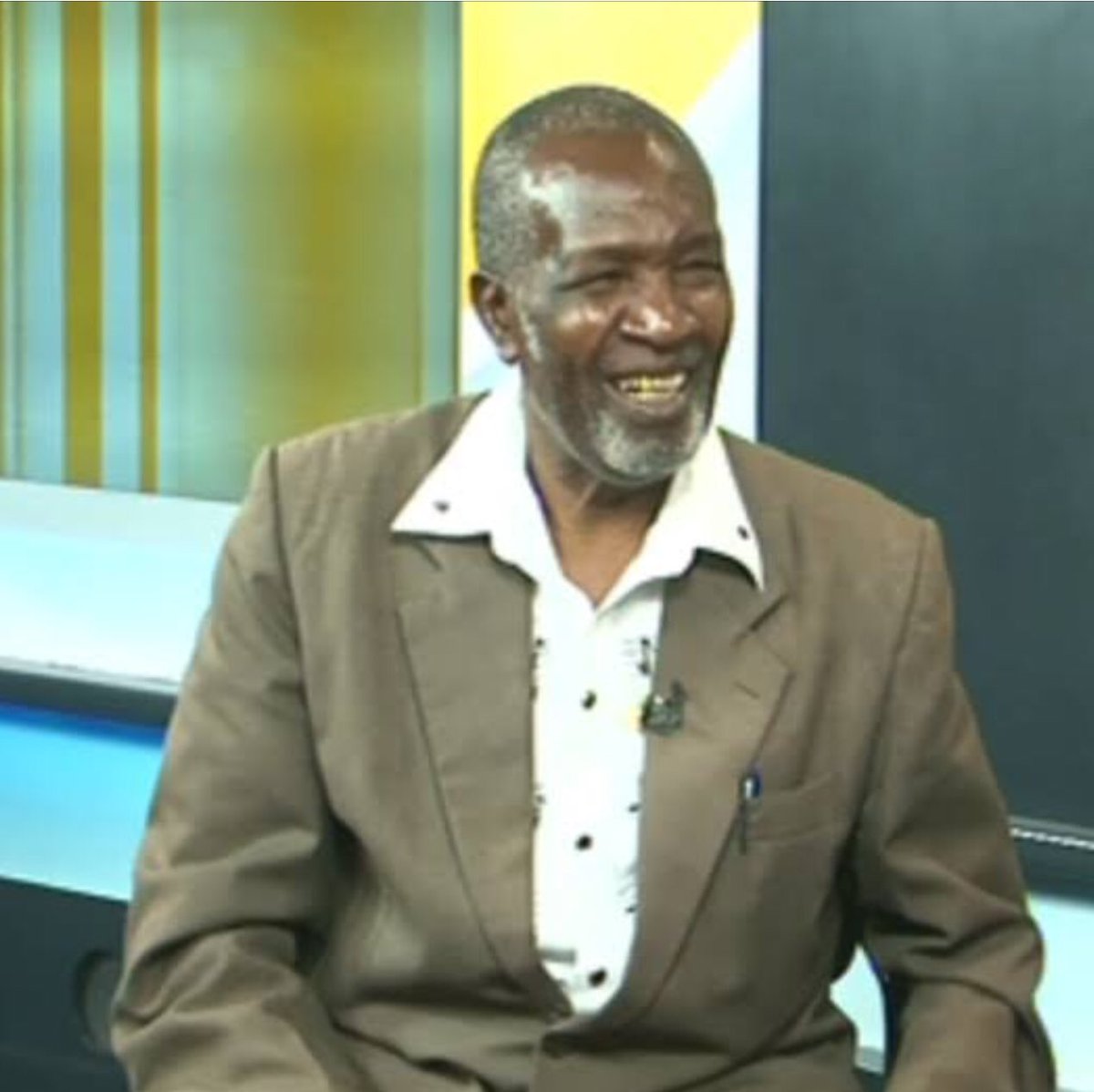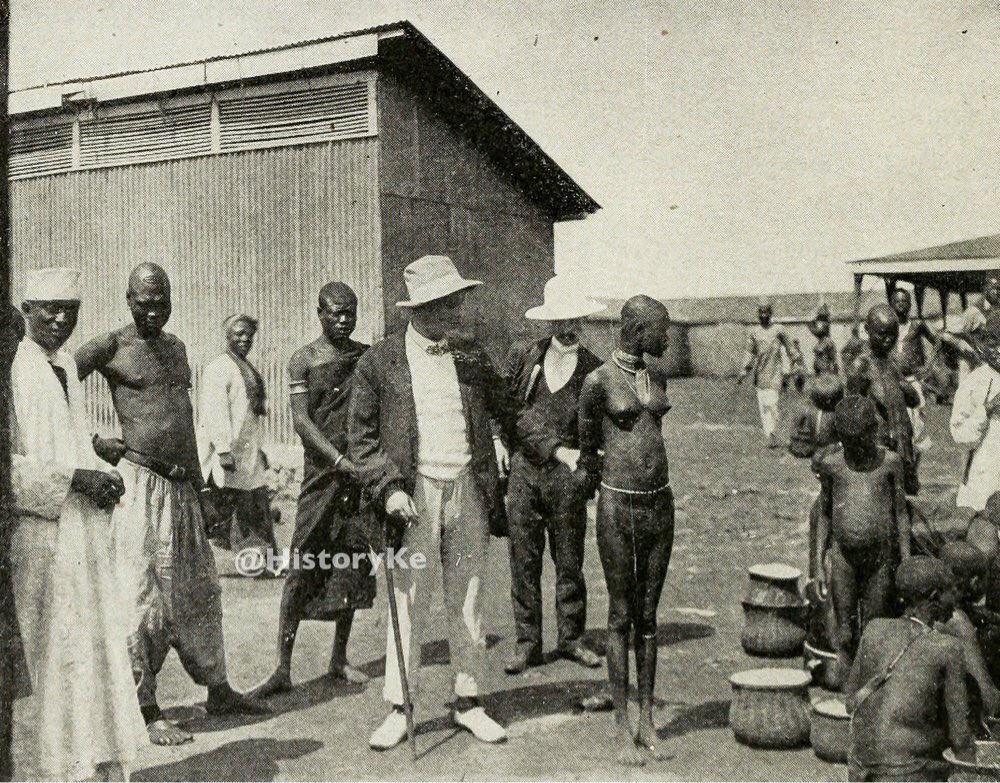#HistoryKeThread #MzeeKenyattaMemorial
Sometime in 1976, James Kanyotu, the time the Head of Kenya's Special Branch, summoned an urgent meeting between him, AG Charles Njonjo, and the Head of Civil Service, Geoffrey Karîîithi. The meeting was held at Kanyotu's residence.
Sometime in 1976, James Kanyotu, the time the Head of Kenya's Special Branch, summoned an urgent meeting between him, AG Charles Njonjo, and the Head of Civil Service, Geoffrey Karîîithi. The meeting was held at Kanyotu's residence.

The meeting at Redhill had been triggered by Dr. Bernard's worrisome diagnosis of the man who had led Kenya since independence.
Kanyotu's sharp instincts had impelled him to act. He knew something was amiss. On the eve of the meeting between the trio, a dinner was hosted in honour of Dr. Barnard. Kanyotu was in attendance.
Midway into his speech, Dr. Barnard inexplicably broke into tears. Kanyotu was convinced the dinner incident had everything to do with Mzee's health.
The top spy was determined to ensure that should anything happen to Mzee, there would be a smooth succession. Around that time, some powerful central Kenya politicians led by Kihika Kimani had championed the change-the-constitution campaign, which was aimed at forestalling...
... Vice President Daniel arap Moi's ascendancy to State House.
The Redhill meeting mandated Kareithi to ensure that solid succession plan in line with Kenya's constitution was in place, and adhered to.
The Redhill meeting mandated Kareithi to ensure that solid succession plan in line with Kenya's constitution was in place, and adhered to.
But it wasn't until more than a year later that Mzee's health sounded alarm bells to those close to him.
On August 21 1978, Mzee and Mama Ngina played host to Kenya's ambassadors and high commissioners abroad at State House, Mombasa.
On August 21 1978, Mzee and Mama Ngina played host to Kenya's ambassadors and high commissioners abroad at State House, Mombasa.
It was not lost on Mzee's guests that his speech was slurry and incoherent. After lunch, Kenyatta was overwhelmed by fatigue and decided to retire to his suite for a rest.
Unknown to the public, his personal physician, Dr. Eric Mngola, used this opportunity to carry out...
Unknown to the public, his personal physician, Dr. Eric Mngola, used this opportunity to carry out...
... a quick check on the old man. By 4pm, the president felt rejuvenated for some action.
The Coast PC, Mr Eliud Mahihu, chaperoned the president to Msambweni in Kwale, South Coast. Here, they would be entertained by Digo traditional dancers.
The Coast PC, Mr Eliud Mahihu, chaperoned the president to Msambweni in Kwale, South Coast. Here, they would be entertained by Digo traditional dancers.
As the entertainment programme continued, close aides noticed that Mzee looked troubled. In an interview months later, Mahihu said the president had actually suffered a mild heart attack.
Not wanting to create a scene, the PC and Mzee's aides waited for a lull in the entertainment program. Meanwhile, they gave Kenyatta, who quietly asked for water, time to recover.
The open-air entertainment was gently brought to and end just before sunset. Mzee's motorcade headed towards the Likoni ferry and onward to State House Mombasa, where more entertainment was in the offing.
However, the founding president never made it for the entertainment. He remained holed up in his room, the First Lady with him.
Mzee - Mama Ngina beside him - started experiencing breathing problems in the dead of night....
Mzee - Mama Ngina beside him - started experiencing breathing problems in the dead of night....
His personal nurse summoned a colleague and the two frantically tried to resuscitate him. In the meantime, Mahihu, whose official residence was close to State House, Mombasa, was contacted by Mama Ngina.
She reported that Mzee's condition was bad. When Mahihu arrived at State House, they found a doctor from Coast General Hospital massaging the president. Mzee's personal physician, Dr. Eric Mngola, who had recently been appointed Health PS, had already left for Nairobi, and was...
... oblivious of Mzee's latest condition.
When the doctor at the scene mentioned that he was running out of oxygen, reports say that Mahihu and (presumably) A.N. Gitau, the State House comptroller, rushed to Aga Khan Hospital to fetch an oxygen cylinder.
When the doctor at the scene mentioned that he was running out of oxygen, reports say that Mahihu and (presumably) A.N. Gitau, the State House comptroller, rushed to Aga Khan Hospital to fetch an oxygen cylinder.

But by the time they returned to State House, the oxygen was not needed. They found the doctor checking on the president's pulse surrounded by a larger medical team, Mzee's aide-de-camp, Col. Macharia and a pensive Mama Ngina.
After a few moments, the doctor stood calm and quiet.
"What's the matter?" Mahihu asked expectantly
"I'm sorry, Mzee is no more", the doctor solemnly replied.
It is understood that Mama Ngina immediately became inconsolable and confronted the doctor in disbelief.
"What's the matter?" Mahihu asked expectantly
"I'm sorry, Mzee is no more", the doctor solemnly replied.
It is understood that Mama Ngina immediately became inconsolable and confronted the doctor in disbelief.
The doctor remained still, only quietly repeating that Mzee had passed on. It was now almost 4am on 22nd August 1978 - 40 years ago today.
In the few hours that followed, Dr. Mngola was flown into Mombasa and confirmed to the assembly of disbelieving senior state officers at State House, Mombasa, that Mzee was indeed dead.
Karîîithi, Escort commander Njiinu and a host of close presidential aides including Mahîhu then got into work, contacting everyone who mattered to break the news.
At 8am the same morning, Njonjo convened an urgent cabinet meeting for 10am at State House, Nairobi. By this time, members of cabinet including VP Moi, service commanders and senior government officials had got wind of Kenyatta's demise.
Cabinet minister Stanley Oloitiptip was hardest to trace, according to reports. In a past interview, Mahîhu disclosed that Oloitiptip had many homes and several wives. Eventually, they managed to contact him and dispatched a police air wing plane to the airstrip closest to him.
Moi chaired his first ever cabinet meeting in an unprecedented sombré atmosphere that morning.
The cabinet meeting decided that a message be broadcast to the nation that the President had died.
The cabinet meeting decided that a message be broadcast to the nation that the President had died.

A famous story has it that the duty editor at Voice of Kenya declined to break the news over the airwaves, insisting that he could only do so if "someone very senior" confirmed Kenyatta's death.
It took the intervention of Chief Secretary Karîîithi to have the message aired.
"It has been announced from State House, Nairobi, that His Excellency the President, Mzee Jomo Kenyatta, father of the nation, who is also the Commander-in-Chief of Kenya Armed Forces died peacefully in his sleep at 3.30am at State House, Mombasa...
... The government requests all Kenyans to remain calm at this moment of national shock. All flags are to fly at half mast." 

That same morning, Air Force commander Col. Gichuru personally flew the plane that carried Mzee's body from Mombasa to Eastleigh air base, from where it was taken to state hous. Every effort was made to ensure that the hearse did not arouse public curiosity on the highways.
But by midday, information about Kenyatta's death had spread far and wide. Condolence messages from foreign heads of state started trickling in and state funeral plans began.
All this time, Kanyotu and Njonjo had an already crystallized plan to swear in Moi as president, pending elections in line with the law.
Although the general public was oblivious of the details of the succession intrigues that preceded Mzee Kenyatta's death, these two men and Karîîithi went down in history as the individuals that saved Kenya from a constitutional crisis.
Credits - Nation Newspapers, A24 Media.

Credits - Nation Newspapers, A24 Media.


• • •
Missing some Tweet in this thread? You can try to
force a refresh













